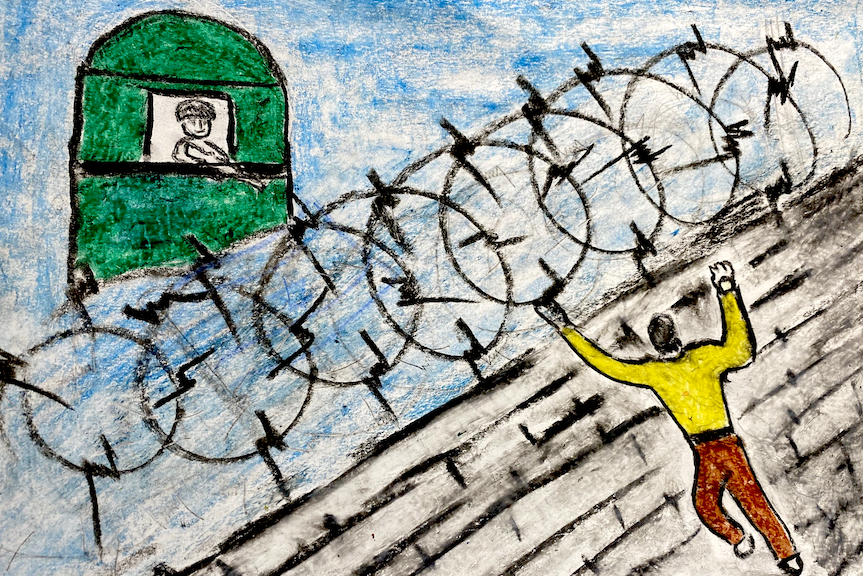The Texas Supreme Court in October took the highly unusual step of ordering a stay in the scheduled execution of Robert Robertson, who was convicted in 2002 of killing his 2-year-old daughter by shaking her violently.
Robertson has steadfastly maintained his innocence in the case; his execution was to take place just 90 minutes after the Texas Supreme Court issued its stay.
The stay is “highly unusual” because the court rarely gets in the way of executions and because the request for the stay came not from Robertson’s attorneys, but from a member of the Texas state legislature, where the move had bipartisan support. The U.S. Supreme Court had earlier refused to intervene in the case. The execution would have been — and would be, if it’s eventually carried out — the first for a conviction for murder caused by “shaken baby syndrome.”
And that’s the rub. The stay had broad bipartisan support in Texas because shaken baby syndrome is now considered by many to be “junk science,” like 911 call analysis, bloodstain pattern analysis, bite mark forensics and scientific content analysis. These “forensic sciences” are no longer permitted in most courts.
Robertson’s stay of execution is a rare example this year of a second chance for people convicted of murder and sentenced to death despite evidence of “actual innocence.”
In September, the state of Oklahoma executed Emmanuel Littlejohn for the 1992 murder of a convenience store owner, despite a recommendation from the state parole board that he be spared pending further investigation of his case.
There was literally no evidence that Littlejohn killed the store owner, and, indeed, prosecutors used the same theory to convict Littlejohn’s partner, saying that he was the one who had pulled the trigger. Littlejohn’s case was also notable because killings coming as a result of a robbery in Oklahoma almost never come with a death penalty.
There was an even more egregious case in September in Missouri. The state executed Marcellus Williams, despite clear evidence of actual innocence. Williams had been convicted of murder in the stabbing death of a former St. Louis Post Dispatch journalist and the theft of her laptop.
But there were serious problems with the case. First, both the prosecution and the police admitted to mishandling the DNA evidence to the point that it could not be used in court. And the state destroyed or corrupted other evidence so that it was unavailable to Williams in his appeal.
In the end, the prosecutor, the sentencing judge and several members of the jury asked Gov. Mike Parson and the Missouri Supreme Court to at least delay the execution pending further investigation. They refused and Williams was executed.
There has been increased activism against the death penalty over the past few years. Even some pharmaceutical companies, which manufacture the drugs used to administer lethal injections, have begun denying the sale of those drugs to death penalty states.
That’s good news, but it hasn’t stopped states like Alabama from continuing to kill people.
Kenneth Smith was executed by nitrogen hypoxia in October in the state. A mask was placed over his mouth and he was forced to breathe in pure nitrogen, which many other states consider to be cruel and unusual punishment.
Smith had already survived a botched lethal injection in 2022, when a state official tried repeatedly to inject him with the lethal injection chemicals, but could not find a viable artery.
Witnesses at his execution said that when the nitrogen was administered, Smith “shook and writhed on the gurney for 22 minutes. He tried to hold his breath as long as he could, then there was some involuntary movement and angled breathing.”
Then he died. Smith’s pastor called the execution “a moral apocalypse.”
There is both good news and bad news across the United States as it relates to the death penalty. The federal government and 27 states currently have the death penalty. Five of those states — California, Oregon, Pennsylvania, Ohio and Tennessee — currently have a pause on executions.
Furthermore, the Death Penalty Policy Project says that 153 people were exonerated in 2023 and were removed from death row. Can you imagine? States were set to execute 153 innocent people! And that’s just in a normal year.
Executions Rose in 2023
Still, the number of executions rose in 2023 over the previous year, even if the number of people on death row nationwide fell. There were 2,331 people on death row at the start of 2024. That’s down 4.3 percent from the start of 2023.
And although the number of executions rose last year, all of those executions took place in five states: Texas, Florida, Missouri, Oklahoma and Alabama. Those states, as well as South Carolina, have so far executed prisoners this year.
Utah is hoping to execute Ralph Leroy Menzies, but he suffers from such serious dementia, according to his attorneys, that he has no idea that he has even committed a crime, let alone that the state is preparing to take his life. The issue is currently before a circuit court in Salt Lake City and will likely end up before the U.S. Supreme Court.
There’s no real progress in doing away with or moderating the use of the death penalty right now. The states mentioned above are happily carrying out the ultimate punishment.
There are no executive or legislative plans in any of the 23 states that still have the death penalty to do away with it. And several of the states that have paused it have done so because they happen to have a governor who is personally opposed to the death penalty (Pennsylvania) or because they can’t get the drugs necessary to carry out lethal injections (Ohio and Tennessee).
Three quarters of the rest of the countries in the world do not have the death penalty. They see it as barbaric and immoral, which it is. And there are no known countries where the death penalty is currently banned that are considering reinstating it.
It’s up to the rest of us, then, to make sure that our elected officials know where we stand. We have to be there to lobby, to write, to march, and to demand change. Lives — including the lives of people are innocent of the heinous crimes of which they are accused — are at stake.
Photo: Death row 2006, neon light installation by d’Iván Navarroat at the Venice Biennale 2009 © Jean-Pierre Dalbéra, Flickr, CC BY 2.0
Source: Consortium News.
































